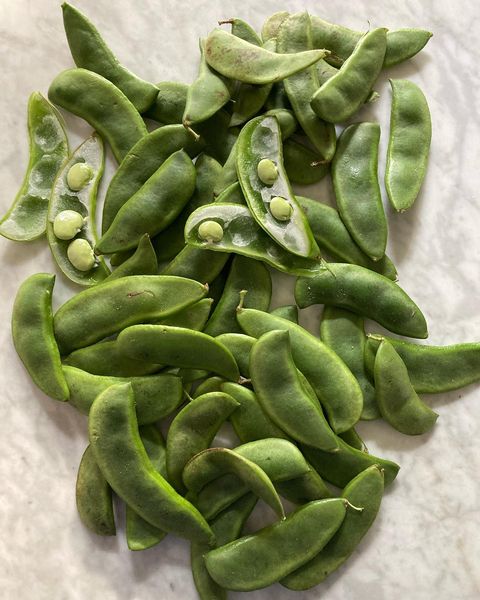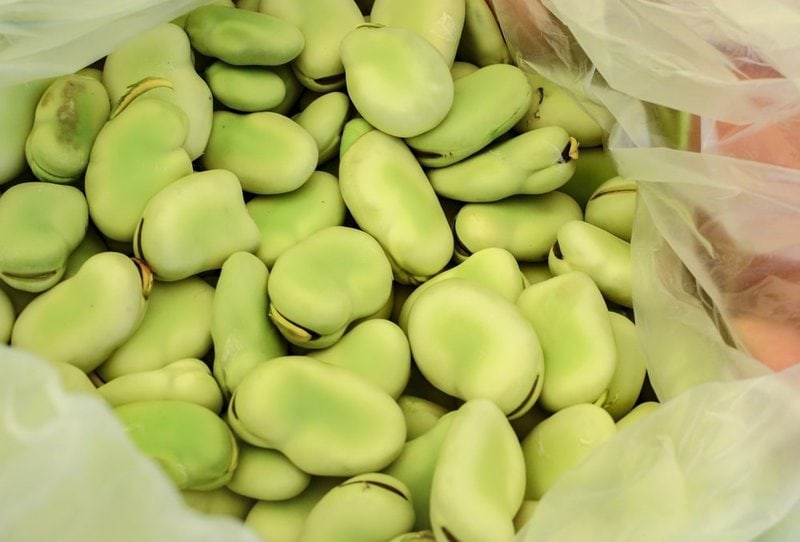Diet is a huge part of a dog’s health and happiness. After all, it’s our job as humans to figure out what dogs should and should not be eating, and this can be challenging. It can exert a lot of pressure on us as we try to find meals that are safe. Lima beans are one of the contentious meals that dog owners are unsure if it is safe for dogs to consume. So, are lima beans safe for dogs to eat?
If you’re here because your dog ate some lima beans, there is no reason to panic. Lima beans are not toxic to dogs. Like everything else, moderation is key, and these beans are nutritious for dogs to consume. They are rich in fiber and proteins, which means they can sit well with other components of your dog’s diet.
However, there are many unanswered questions when it comes to lima beans. Luckily, we are here to give answers to your questions. We have done thorough research and put together this post discussing everything you should know about feeding lima beans to dogs. So, let’s find out what happens when your dog eats lima beans and if there are dangers associated with this nutritious meal.
Can Dogs Have Lima Beans?

The simple answer is yes. Dogs can and should have lima beans, but safety measures should be adhered to.
First, lima beans should be adequately prepped to ensure dogs can easily digest them. Dried lima beans are not good for a dog’s stomach or teeth. When lima beans are eaten dry, they tend to hurt your dog’s stomach and also damage their teeth.
Also, canned lima beans are not suitable for your canine friend. This is because they have lots of sodium and other preservatives that are bad for your dog’s health.
Furthermore, remember to use fresh lima beans when preparing them for your dog. You also need to cook them without any extra ingredients or additional spices like garlic and onions.
You can always mix lima beans with your dog’s food and serve them once in a while, not every day. Remember, too much lima beans can be bad for your dog’s digestive system. So, always serve in moderation.
What Are Lima Beans?
Lima beans, also called butter beans (due to their starchy and buttery texture), are a plant-based protein source that originated from the fertile tropical valleys of Central America.
They became quite popular because of their high protein levels and dietary fibers. You can decide to grow them yourself, buy either canned, frozen, or fresh.
If you’re planning to buy the fresh ones, note that they are always in season from late summer to early fall. Find lima beans that are whole and uncracked and keep away from those that are dried, spotted, yellowish, or wilted.
Here are a few nutritional facts about lima beans;
- Calories – 6.2 oz
- Fat – 1.3 g
- Carbohydrates – 1.1 oz
- Protein – 10.7 g
- Fiber – 7.6 g
- Sodium – 12.5 mg
- Sugar – 2.3 g
Are Lima Beans Good For Dogs?
Lima beans are a great source of plant protein and are stacked with lots of minerals and vitamins. This makes them an amazing choice for a dog’s diet.
Lima beans are approximately 73% carbs, 24% protein, and 3% fats. They are also a great source of iron, potassium, folate, manganese, and fiber.
So, let’s dive deeper into some of the major benefits of these butter beans.
What Are The Benefits Of Lima Beans To Dogs?

As you may already know, lima beans have so many benefits for dogs. They are full of essential nutrients and have low-fat levels that are important for obese or diabetic dogs.
Here are some crucial benefits of lima beans;
High In Fiber
Fiber is an important nutrient in the dog’s diet, similar to humans. It offers lots of support for a dog’s digestive system, ensuring they remain regular. Without fiber in their diets, dogs may be at risk of digestive problems.
Fiber will prevent harmful bacteria from forming and help reduce constipation and diarrhea.
Unlike other foods, since fiber is more filling, lima beans can make your dog full with just a few bites. This prevents overeating and goes a long way in helping your dog maintain or lose weight.
Unlike carbohydrates, fiber is a bit harder for dogs to digest. While this may seem like a negative thing, it is extremely helpful. Slow digestion ensures your dog’s blood sugar level remains steady, and that’s why it is recommended for diabetic and pre-diabetic dogs.
Fibers are also known to protect the colon by fighting cancer-causing chemicals. However, too much of the fibers might cause diarrhea.
A Great Source Of Protein
Lima beans are a great source of protein. Protein is vital for a dog’s diet, especially for older dogs. This is because it helps maintain the dog’s muscles, and without enough muscle mass, the muscles might start to deteriorate.
Although older dogs are less active and need less food, their protein requirement increases to prevent age-related weight loss. Older dogs will lose muscles naturally, and a protein deficiency can make it worse.
As much protein is important for older dogs, they are also essential for young puppies who are growing. So, feeding them lima beans or other protein sources is crucial.
Adequate Amounts of Fat, Essential Vitamins And Minerals
Lima beans have low-fat levels, making them a great meal for dogs struggling with obesity.
They also have high iron levels to support your dog’s red blood cells and cardiovascular system.
In addition, these butter beans are also a great source of potassium, folate, and essential vitamins.
How Do You Feed Lima Beans To Dogs?
Here are some tips to assist you in properly feeding lima beans to your dog;
Cook The Beans
While dogs can eat lima beans raw, it is not recommended. You need to cook these butter beans first before serving them to your dog. Cooking them makes it much easier for dogs to digest and also prevents teeth damage.
You can cook the beans in butter, lard, or corn, depending on what your dog prefers. This is because they can be quite tasteless when served alone.
Cooking Tips
Since dogs have shorter digestive tracts, these butter beans are best consumed when cooked or pureed. Here is one of the best recipes for cooking lima beans for dogs.
- In a cooking bowl, add 4 cups of boiling water and one cup of dry lima beans that have been well cleaned.
- Boil the mixture for about 3 minutes.
- Remove the bowl from heat and leave it covered for about an hour.
- Drain off all the cooking water and rinse the beans again.
However, if your dog feels gassy after consuming lima beans or any other type of beans, then you should try out this recipe;
- Pre-soak the beans in water for about three hours.
- Boil the water and simmer for about 30 minutes.
- Drain the water and replace it with clean water.
- Continue cooking at a simmer for about 30 minutes.
- Drain the water and rinse the beans.
This recipe helps minimize the starchy sugars that are responsible for the excess gas. You can also choose to add an anti-gas probiotic supplement that will do wonders to the dog’s overall health.
Avoid Excess Seasoning
Generally, dogs’ meals should never have too many seasonings. In fact, seasonings can be harmful to dogs and do not carry any nutritional value at all.
Adding ingredients like bacon or lard may increase the dog’s cholesterol levels. As a result, weight gain and other health complications like pancreatitis. Additionally, a seasoning that is too spicy may lead to digestive distress like diarrhea.

Limit The Consumption Of Lima Beans
You need to monitor the amount of lima beans that dogs can consume. Consuming too much lima beans can cause excessive gas in the stomach leading to pain and distress. They can also experience bloating and constipation.
Although these butter beans have numerous health benefits, they can’t be used as a substitute for a regular daily diet. Be sure to regulate the number of beans that you give your dogs.
How Much Lima Beans Should My Dog Eat?
Lima beans should never be more than 10% of your dog’s daily calorie requirement. Since they are high in fiber and calories, you need to limit the intake to about 2 to 3 tablespoons or 0.7 to 1 oz per serving.
However, the amount of lima beans that your dog can consume is dependent on a number of factors, for instance, the size of your dog.
If your dog is smaller or medium in size, you should never feed it with more than one tablespoon, which is about 10 to 15 g per serving.
Also, you should feed your dog lima beans a maximum of 3 times a week, with a minimum of a 24-hour interval between the two servings. Ideally, moderation is key, don’t overdo it.
Avoid Canned Beans
Freshly cooked lima beans are much better than canned ones. Most often than not, canned beans are preserved using chemicals like sodium, potassium sulfite, and sulfur dioxide that may be harmful to your dog’s health.
Be Creative
Just like humans, different dogs will have different preferences when it comes to taste. So, you should never force your dog to take lima beans if it doesn’t like the taste of these butter beans.
However, you can always try to mix lima beans with some quality dog food. You can also mash lima beans and mix them with wet dog food, some rice, and chicken bits.
Can You Freeze Lima Beans?
Yes, you can. Once you’re done cooking the lima beans, allow them to cool off. Drain and freeze them to keep them fresh for a maximum of three months.
You can also choose to freeze lima beans in small portions with the right amount of one serving, and when you want to serve your dog, thaw and heat them a little.
Are Lima Beans Bad For Dogs?
Although we have answered the question, “can dogs have lima beans” with a firm yes, there are some risks associated with the consumption. Here are some instances where lima beans can be bad for dogs;
- Canned beans are unhealthy for dogs because of the preservatives and high sodium content.
- Dried lima beans can be difficult for dogs to chew and interfere with the digestive system once swallowed.
Lima beans can cause gas in dogs when not prepared properly. This is because these beans contain a sugar called raffinose that is hard for dogs to digest.






